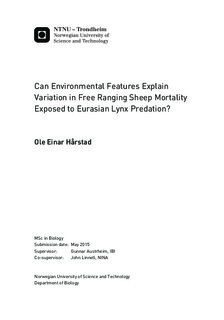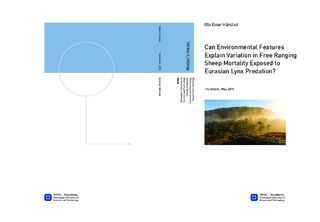| dc.description.abstract | The recovery of large carnivores in Europe has led to widespread and chronic conflicts because of their depredation on livestock, which can have important economic implications for farmers. The conflict between Eurasian lynx (Lynx lynx) and free-ranging domestic sheep (Ovis aries) is widespread in Norway. The grazing system makes it hard to quantify exact losses due to different carnivores, however there is much variation in losses between grazing units. This study aimed to try and explore if landscape features could explain this variation, and to see if this was consistent with what we know about lynx habitat use. Knowledge about the relationship between species and their habitat is important when investigating the lynx sheep conflict. Habitat features such as local abundance of wild prey, topographical features, forest cover and distance from human infrastructure have been shown to influence depredation risk in earlier studies. Here, I used 9 years of data on reported losses of sheep, in 104 grazing areas with lynx as the only large carnivore predator, along a gradient of free ranging sheep and wild prey densities in southern Norway. I found that mortality in lambs increased with increasing roe deer- and lynx density within grazing areas. Mortality in both lambs and ewes was positively and strongly related to high proportions of forest, while private road density was negatively associated with lamb mortality. These results were consistent with the hypothesis that lynx depredation was a major cause of lamb mortality, although other mortality factors may also follow the same gradients. The result of this study suggest that there are some areas with predictably high losses where mitigation measures could be concentrated. | |

